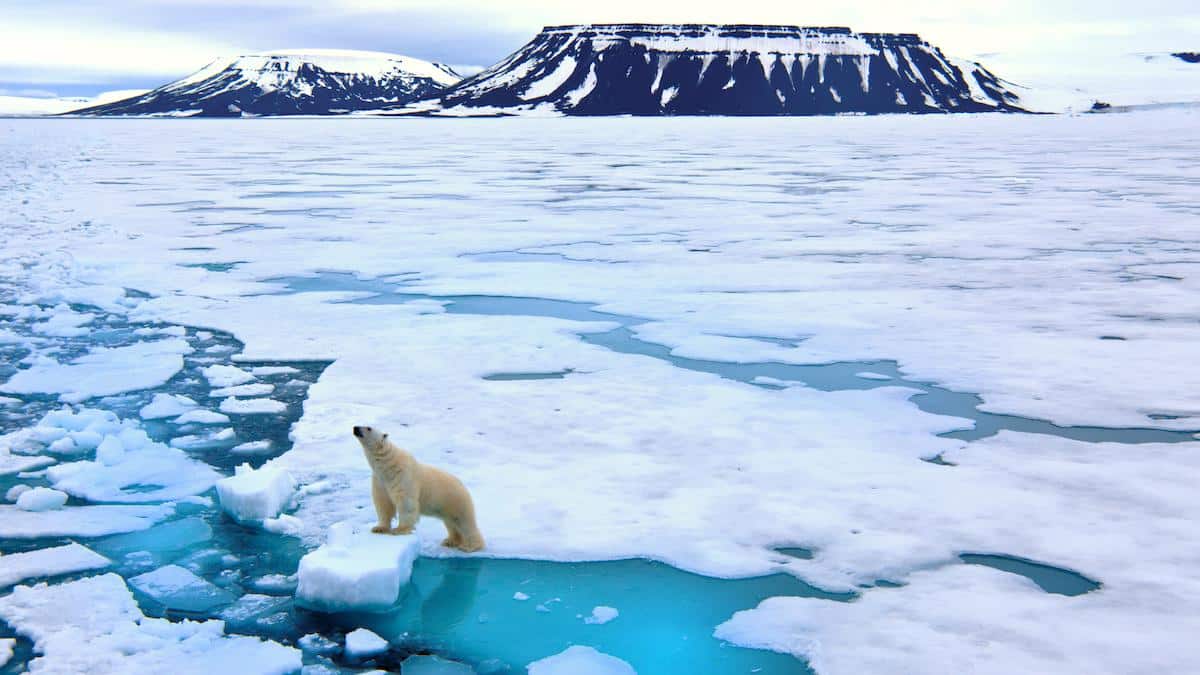

The annual Arctic Report Card shows that sea ice continues to decline. SeppFriedhuber / Getty Images
The 2021 Arctic Report Card is in, and it’s not looking good.
The region continues to warm twice as fast as the rest of the planet, and this is having a direct impact on communities both near and far from Earth’s northernmost ecosystem, according to the annual report from the NOAA-led Arctic Program.
“The Arctic report card this year is showing us how well connected we as people are to the environmental changes happening in the globe, and how these cascading disruptions in one place is not isolated and might influence other parts of the system,” Twila Moon, the report’s lead editor who works at the National Snow and Ice Data Center, told CNN. “We now live at a time that is fundamentally different from the past and will be experiencing ongoing change into the future.”
The report, which is the work of more than 100 scientists, highlighted several examples of how the climate crisis is disrupting the Arctic. While this year’s findings don’t announce “blockbuster” record breakers, they do demonstrate “consistent, alarming and undeniable” alterations, NOAA administrator Richard W. Spinrad told The New York Times.
Here are some of the report highlights:
- The average surface air temperature over the Arctic from October 2020 to September 2021 was the seventh warmest on record.
- Sea ice continues to decline; the post-winter sea ice volume in April 2021 was the lowest since record-keeping began.
- Terrestrial snow cover in the Eurasian Arctic was the third-lowest on record this June.
- The tundra is greening, and greenness levels were at their second-highest on record across the region.
- Beavers are moving north into the Alaskan tundra, which damages permafrost by increasing the amount of non-frozen surface water; beaver ponds in the region have doubled in most areas since 2000.
- The Greenland Ice Sheet saw three major melt periods this summer, and rain fell on Greenland’s 10,500-foot Summit Station for the first time.
Of course, what happens in the Arctic doesn’t stay in the Arctic. Ice melt from Greenland causes sea level rise, coastal erosion and saltwater intrusion to coastal areas and low-lying islands around the globe, CNN explained. The thawing of permafrost also releases more greenhouse gas emissions into the atmosphere, which heat the entire planet.
The warming of the Arctic also means it sees more impact from human activity, the report found. Less sea ice means more shipping traffic, and with it comes pollution of all kinds. Marine noise levels are rising, disturbing marine mammals. Further, 2020 saw a “marine debris event” in Alaska’s Bering Strait, as more and different types of shipping refuse washed ashore.
Finally, a combination of the climate crisis and the coronavirus pandemic is making it harder for Alaskan Natives to access food, The Hill reported. Climate change is likely decreasing salmon harvests, social distancing requirements are keeping people away from harvesting areas and supply chain issues make it harder to get food from grocery stores.
“Local Arctic residents are often required to carry the heaviest burden of dealing with the impacts for which they bear little to no responsibility,” the report authors wrote in their executive summary. “Responding to environmental changes, managing increasing human activities, and improving future outcomes will require attention and efforts at multiple levels of government, across communities and organizations, and amongst Arctic and non-Arctic countries.”
- The Arctic Is Drastically Changing Due to Climate Change: Watch ...
- We Are Failing to Protect the Arctic From the Climate Crisis, Report ...

 233k
233k  41k
41k  Subscribe
Subscribe 